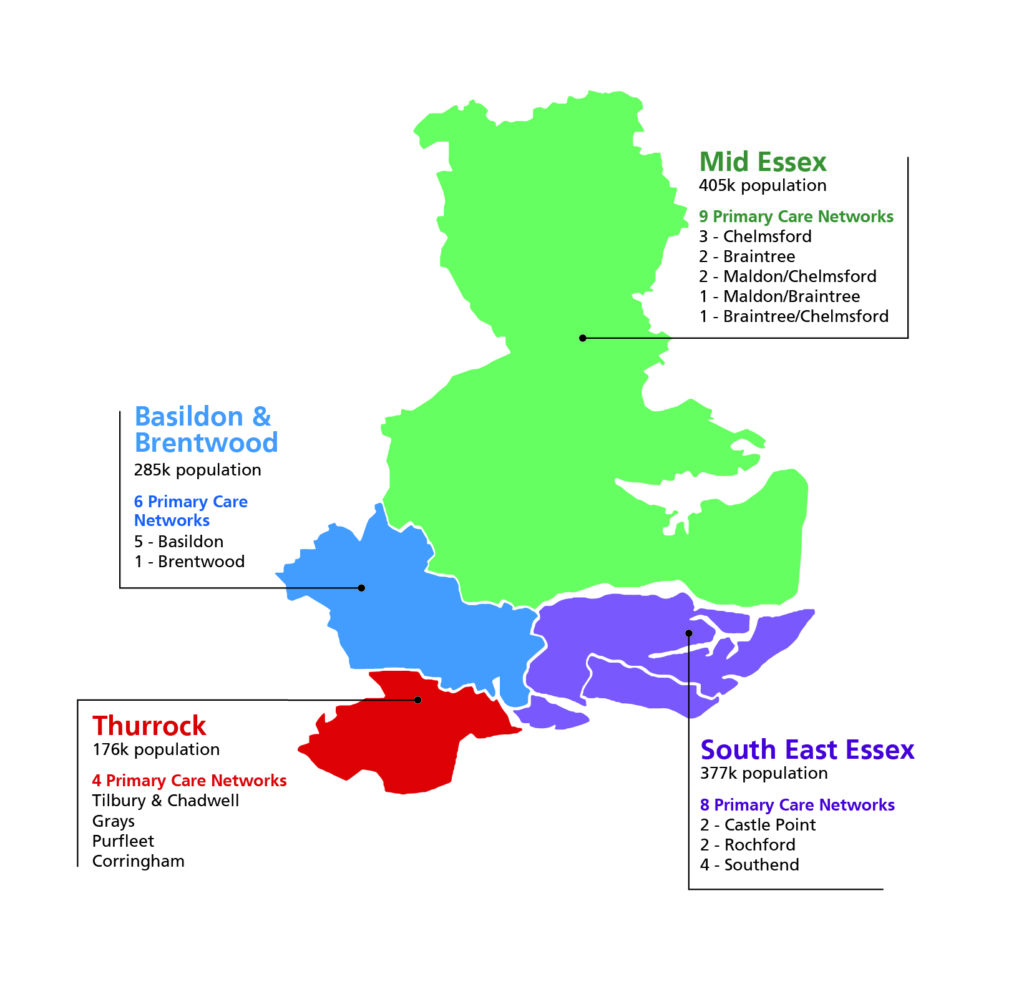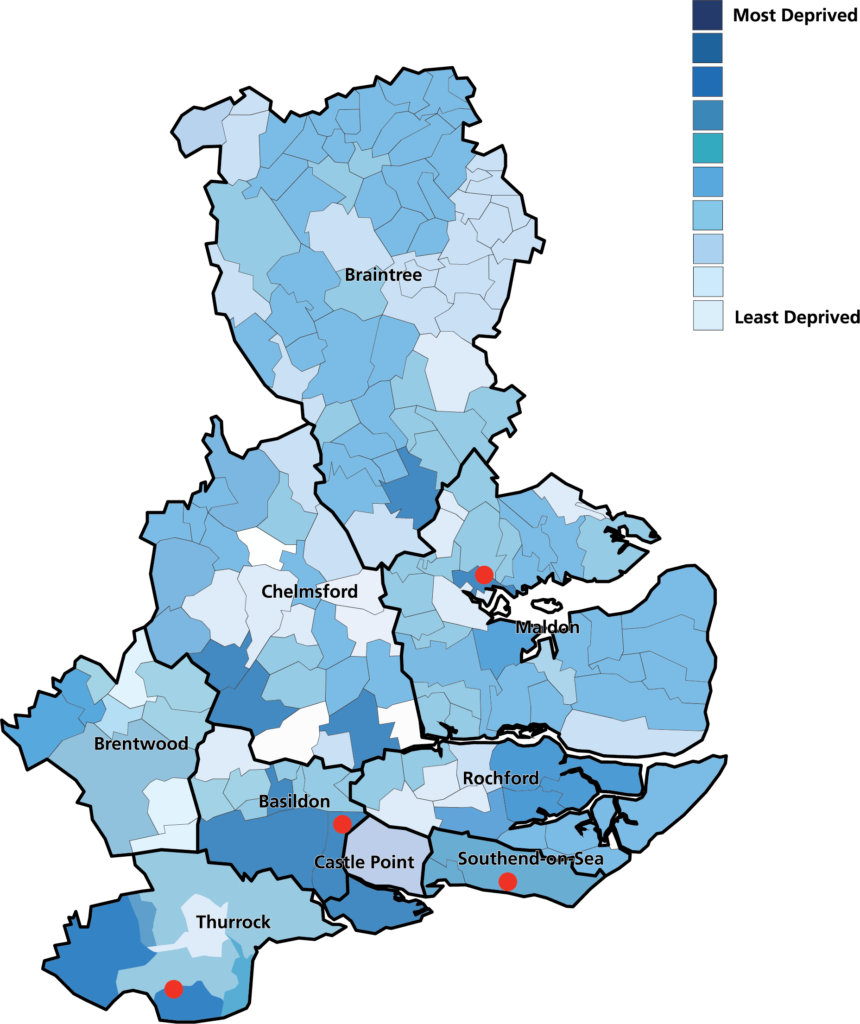Our ten-year integrated care strategy explains our plans for improving health and care for residents in mid and south Essex. It sets out what will be different and how we will work together to achieve our shared objectives.
We know we won’t make things better just by providing more and more services. We need to work together on all the things that affect people’s lives, like tackling loneliness and isolation, unsuitable housing, the environment, the impacts of unemployment or being in debt.
These are known as the “wider determinants of health” and are affecting our most vulnerable communities more than ever.
If we can improve the wider determinants of health, we can improve everyone’s health and wellbeing and reduce unfair inequality that exists. That is the central theme of our strategy – to tackle inequalities, together.

It is a pleasure and a privilege to chair the Integrated Care Partnership, a fantastic group that brings together all the key players who can really help us make a difference in health and care outcomes for our residents. But for me and my three Vice Chairs, it’s not just about who attends our partnership meetings, it’s about how we work together with residents – having those important conversations about what is working well and where we can do better and supporting residents to be part of the change they want to see. It is only by working together that we will really make these things happen.
The health and care system
The Mid and South Integrated Care System serves a population of 1.2 million people, living across Braintree, Maldon, Chelmsford, Castle Point, Rochford, Southend, Thurrock, Basildon and Brentwood.

The infographic presents a color-coded map of mid and south Essex. Four localities are shown, each shaded in a different color and labeled with the name of the locality, population size, and the number of primary care networks. The localities are as follows:
Mid Essex: Colored green, with a population of 405,000. It has 9 primary care networks, further broken down into sub-regions: three in Chelmsford, two in Braintree, two in Maldon/Chelmsford, two in Maldon/Braintree, and one in Braintree/Chelmsford.
South East Essex: Colored purple, with a population of 377,000. It comprises eight primary care networks, distributed as two in Castle Point, two in Rochford, and four in Southend.
Basildon & Brentwood: Shown in blue, with a population of 285,000. This region has six primary care networks, with five in Basildon and one in Brentwood.
Thurrock: Displayed in red, with a population of 176,000. There are four primary care networks in this region, located in Tilbury and Chadwell, Grays, Purfleet, and Corringham.
-
Three top tier local authorities and seven district, borough and city councils -
Nine voluntary and community sector associations -
One hospital trust with main sites in Southend, Basildon and Chelmsford -
Three main community and mental health service providers who work as a community collaborative -
One ambulance trust -
Three Healthwatch organisations -
Over 149 GP practices, operating from over 200 sites, forming 27 Primary Care Networks -
A range of other partners, including Essex Police and our three local universities
The Integrated Care System is made up of two statutory committees:
Integrated Care Board (ICB):
A statutory NHS organisation responsible for developing a plan for meeting the health needs of the population, managing the NHS budget and arranging for the provision of health services in the integrated care system area.
Integrated Care Partnership (ICP):
A statutory committee jointly formed between the NHS ICB and all upper tier local authorities that fall within the ICS area (councils with responsibility for children’s and adult social care and public health). The ICP brings together a broad alliance of partners concerned with improving the health and wellbeing of the population.
Find out more about our boards and committeesAbout our Integrated Care Strategy
The Integrated Care Partnership has the responsibility for producing an integrated care strategy setting out the ambitions of the partnership to help meet the health and wellbeing needs of the population.
In preparing the strategy, we looked at the regulatory and statutory requirements, particularly the four key aims established for integrated care system:
-
Improving outcomes in population health and healthcare -
Tackling inequalities in outcomes, experience, and access -
Enhancing productivity and value for money -
Supporting broader social and economic development
We also reviewed the ‘triple aim’ set out for NHS bodies which requires them to consider the effects of decisions on:
- The health and wellbeing of the people of England (including inequalities in health and wellbeing).
- The quality of services provided or arranged by both themselves and other relevant bodies (including inequalities in benefits from those services).
- The sustainable and efficient use of resources by themselves and other relevant bodies.
Why change is needed
-
Population growth by 14.7% over next 15 years -
The gap in life expectancy in some areas is as much as 12 years between our wealthiest and most deprived neighbourhoods -
Life expectancy varies from 78.3 years if you are male living in Thurrock to 84.7 years if you are female living in Brentwood -
Demand for health and care services has grown faster than the funding provided from central government -
We have an ageing population with one in seven people aged over 75 by 2039 -
Increasing demand for services, including more people needing GP services, A&E and social care
Levels of deprivation in mid and south Essex
There is a large and growing gap between the most and least deprived districts in mid and south Essex. That is why we need to work with wider partners across our local area to make the greatest impact on health and wellbeing.

Infographic explanation
The image is a colour-coded map of mid and south Essex Essex. Labels on the map indicate the names of towns: Braintree, Chelmsford, Brentwood, Basildon, Castle Point, Thurrock, Maldon, Rochford, and Southend-on-Sea. Different shades of blue fill the districts, indicating varying levels of deprivation.
High levels of deprivation are shown in Thurrock, Basildon, Canvey, Southend and some part of Chelmsford and Braintree.
Determinants of health
It is recognised that good health and wellbeing has many contributing factors that go beyond clinical care and there are wider determinants of health that directly impact on health outcomes.
Health behaviours 30%
10% Diet / Exercise
10% Smoking
5% Poor sexual health
5% Alcohol use
Socio-economic factors 40%
10% Education
10% Income
10% Employment
5% Community safety
5% Family / Social support
Clinical Care 20%
10% Access to Care
10% Quality of Care
Environment 10%
5% Environmental Quality
5% Built Environment

It is excellent to see the wider determinants of health, including socio-economic factors, the built environment and healthy behaviours, as being central to the Integrated Care Strategy. Health and care services will only ever be part of the solution, we need to be working to build healthy, resilient communities, with the knowledge and skills to help themselves, as much as being supported by services.